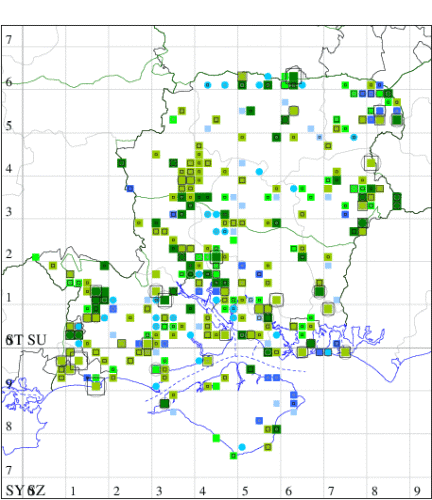Ear Moth
Amphipoea oculea
Checklist Number73.128 [B&F: 2360]
Verification
Record requires retention of specimen until confirmed, and may require dissection. Consult with CMR if unsure
Common in unimproved grassland, woodland rides, marshes, moorland, saltmarshes and gardens throughout much of the British Isles, a species of conservation concern under the UK Biodiversity Action Plan. In Hampshire and on the Isle of Wight widespread and still found in small numbers across the county. Wingspan 28-34 mm. Ear Moth is very like other Amphipoea species and those from northern Britain at any rate can only be identified with certainty by reference to the genitalia (MBGBI Vol 10). In southern England, it may be confused with Saltern Ear A. fucosa, however Saltern Ear is generally paler and longer-winged. Larva feeds within stems and roots of various grasses, including Annual Meadow-grass and Tufted Hair-grass, and herbaceous plants such as Butterbur, over-wintering as an egg.


The abundance in each month is indicated as follows:
 No records
No records Very occasional
Very occasional Irregular
Irregular Uncommon
Uncommon Off-peak, but not unusual
Off-peak, but not unusual Off-peak, but not unusual
Off-peak, but not unusual Main flight time
Main flight time| J | F | M | A | M | J | J | A | S | O | N | D | |
|---|---|---|---|---|---|---|---|---|---|---|---|---|
| Adult |  |  |  |  |  |  |  |  |  |  |  |  |
| Larval |  |  |  |  |  |  |  |  |  |  |  |  |
()(IMG_5842).jpg)

()(IMG_5842).jpg)


